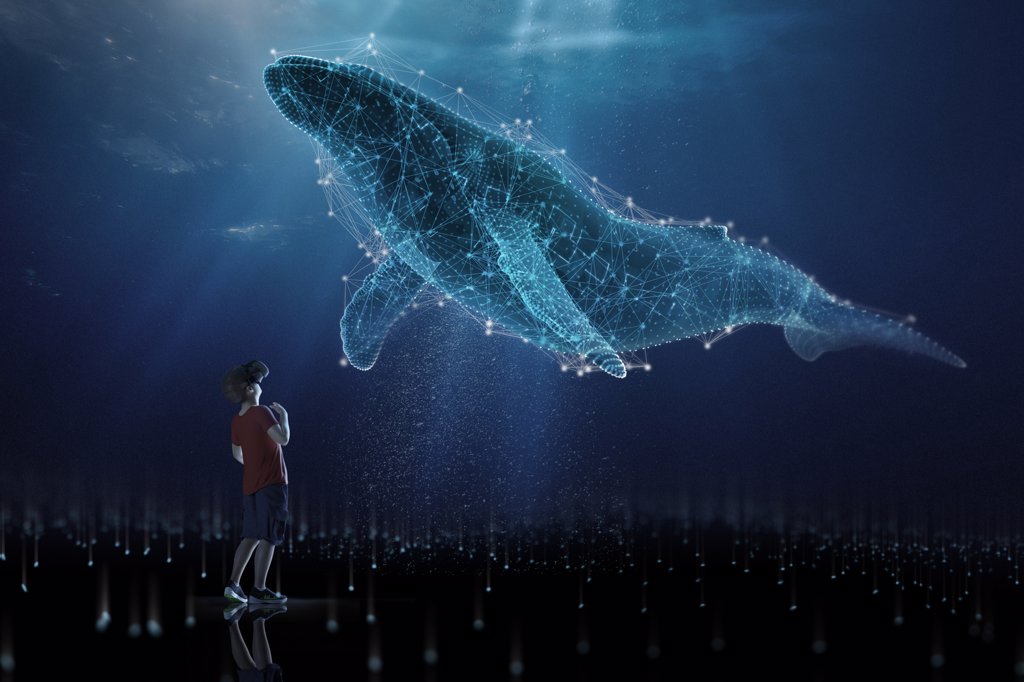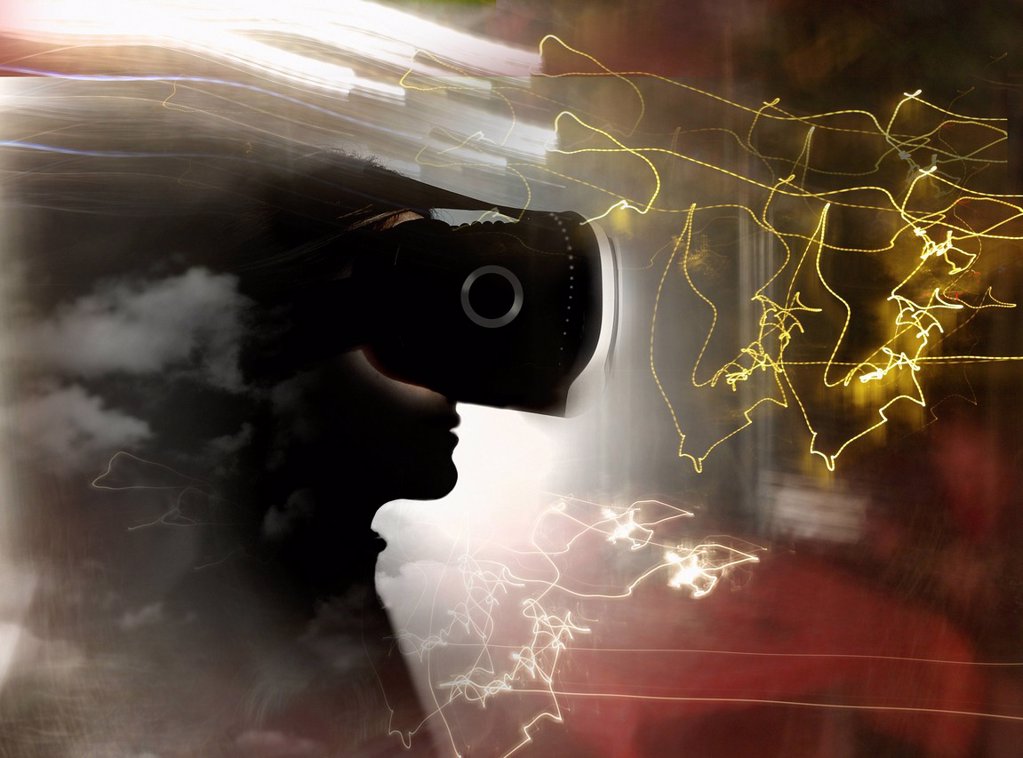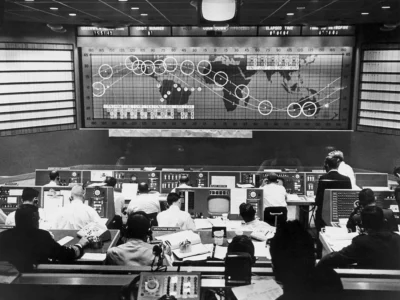The Metaverse is EVERYWHERE: How Marketing and Advertising Teams Can Leverage This Extended Reality
Buzz words come and go, but for those who use both art and science to decipher the future – that would be the intrepid marketing and advertising practitioners – these words suggest a path forward, breadcrumbs, if you will. Just visit any news site, technology newsletter or even the traditional media such as the Wall Street Journal or New York Times. It will become obvious that the buzziest of the buzz words is metaverse.
No big deal, right? It’s another buzz word. Meh. So what?
Here’s what. This situation gets serious when someone “in charge,” up there in the rarified air of the C-suite, fires off an email to everyone in the company with this subject line:
SUBJECT: What are We Doing About This METAVERSE Thing?
Hello, “extended reality!” Let me introduce you to my little friend, metaverse.
*****
Success in the metaverse demands dramatic stock photographic images and video, that can serve as a base for augmented reality, are critical to the creation of a compelling narrative. Click here to see some stunning content from SuperStock.
*****
What and WHERE is the Metaverse?
First off, the metaverse was around long before Facebook CEO, Mark Zuckerberg decided to change his little social media company’s name to Meta. The fact that he has committed to spend more than $10 billion on nurturing this digital playground certainly got everyone’s attention, but the concept of a metaverse was launched by American science fiction author Neal Stephenson who introduced the metaverse in his 1992 novel, Snow Crash.” In the novel characters use the metaverse as an escape from a futuristic, largely dystopian world.
Explaining the metaverse can be complicated. This is because, like true love and happiness, they are different things to different people. And, BTW, it doesn’t really exist yet.
According to The Washington Post, “It may be easier to grasp the concept by first saying what it isn’t: It’s not a single product, it’s not a game, and it’s not being created by one company. Rather, it’s akin to a 3D world wide web, where businesses, information and communication tools are immersive and interoperable. In a way it’s a digital facsimile of how we live in the physical world.”
The comprehensive source for all things virtual – XR Today – has an even more succinct definition of the metaverse. “The metaverse can be defined as a simulated digital environment that uses augmented reality (AR), virtual reality (VR), and blockchain, along with concepts from social media, to create spaces for rich user interaction mimicking the real world.”
Want more proof of the ubiquity of the metaverse? From a November 2021 Axios report, here are a few projects that are currently underway:
- Facebook’s name change shows an emphasis by Zuckerberg on building the VR products of its Oculus subsidiary into a vast virtual home for both remote work and social interaction.
- Disney offered few details about the company’s plan but has said that it aims to use Disney+ as a platform for the metaverse.
- Roblox (a platform for younger kids) provides tools for users to build their own games and worlds, with an emphasis on keeping its young enthusiasts safe.
- Epic Games, the parent company of “Fortnite,” announced a $1 billion round of funding in April 2021 to support future metaverse growth opportunities.
- Microsoft debuted a new mixed reality platform called Mesh that it plans to combine with its “Microsoft Teams” product to allow people to “join virtual meetings, send chats, collaborate on shared documents and more” in a metaverse-like environment.
These projects pale in comparison to one of the biggest metaverse-based deals of 2022, which was made by Microsoft on January 18. According to Forbes, “Gaming companies have recently hit the headlines with another metaverse-induced trend moves for consolidation. Microsoft announced plans to acquire World of Warcraft and Candy Crash maker Activision Blizzard (which was reeling from multiple, workplace scandals) in its largest all-cash acquisition ever at $68.7 billion, hoping that bestseller games will help attract skeptics to the metaverse. This news is coming shortly after Grand Theft Auto maker, Take-Two announced it would buy Farmville creator Zynga for $13 billion the week prior, and after 2021 saw a record $117 billion worth of gaming acquisitions.”
Metaverse For Marketing
For in-house marketing teams, advertising agencies, public relations/special event agencies and any other business groups that are charged with using the metaverse platforms to SELL STUFF, reality can sometimes bite. It’s all fun and games until somebody loses an (virtual reality) eye!
Harnessing this “Tasmanian Devil” of a medium can be daunting to even the most proficient digital denizens. However, there are best practices that can spell the difference between a virtual message that is elegant and mesmerizing and one that’s as lame as a dad joke. A little technical primer might be useful.
The Difference Between Augmented Reality and Virtual Reality
According to several sources, “augmented reality (AR) is an interactive experience of a real-world environment where the objects that reside in the real world are enhanced by computer-generated perceptual information.”
The differences between virtual reality (VR) and AR come down to the devices they require and the experience itself: AR uses a real-world setting while VR is completely virtual. VR requires a headset device, but AR can be accessed with a smartphone (so long as it’s 5G or faster). AR enhances both the virtual and real world while VR only enhances a fictional reality.
A classic AR application is found on any televised football game. That “yellow line” on the field of play that shows exactly WHERE the offensive team must advance the ball in order to earn a “first-down” is a simple AR application that is overlaid on the live video of the field of play.
This same technology, which has been a part of sports programming for decades, can be used by resourceful storytellers on a metaverse platform. Plus, by using stock photography and/or stock video footage the message can be delivered without the expense of on-location photography and enhanced by social media filters or augmented reality enhancements.
I Love a Parade
For the foreseeable future, a combination of real world and metaverse AR is a strategy that might move the needle on customer engagement. An excellent example of this strategy was used by: Honda and the Rose Parade January 2022.
MediaPost reported that Honda offered Rose Parade attendees and at-home viewers the opportunity to virtually fly over the parade route using a custom Snapchat filter.
“With four Honda women associates aboard, the float celebrated science, technology, engineering, arts and math (STEAM) education by depicting a young girl whose dreams have taken flight with a rocket pack she designed and built.
“Drawing inspiration from the scene depicted on Honda’s float, the Snapchat filter enabled users to embrace their ‘inner engineer’ as they donned a virtual helmet and goggles, assembled a jet pack and flew over a portion of the parade route.”
It was a simple AR/metaverse application which dramatically enhanced the parade sponsorship and completely engaged millions of potential Honda customers.
A Sustainable Metaverse Strategy Using Applied Game Theory
Understanding human motivation is also a part of achieving marketing success in the metaverse. According to this article, this involves the use a behavioral science – Applied Game Theory (AGT).
Writer Erica Wahrhaftig notes “The metaverse is the next iteration of the digital existence we’re already living. Zoom meetings and virtual events have bridged the gap, but they’re still not a face-to-face equivalent. The metaverse aims to impactfully blend the qualities of in-person engagement with the digital sphere. Game theory is the key to making that experience meaningful and sustainable.
“Smart brands need to first consider the tangible goal of their metaverse strategy, then make sure the new experience is far superior to what’s currently serving that need. AGT dictates a 360-degree understanding of a target audience before a single functionality is put into place. Who will be interacting with your platform? What problem are they trying to solve? What motivates them?
“Behavioral patterns inform engagement drivers — game mechanics — that resonate best. User experience might be enhanced by a ‘leader board’ or rewards. Game mechanics enrich user interactions enough to make the metaverse sustainable.”
Other Considerations for Building a Metaverse Campaign
As with any social media campaign, the “rules of engagement” have evolved, and they will continue to change. Both creatives and programmers should consider several other factors when designing a metaverse environment.
- Is it safe, especially if young visitors are targeted? Online privacy rules and regulations were the hot buttons in 2021 and they are likely to get much tougher. Beware!
- Is it culturally sensitive? Offensive images or messages are just as obnoxious in a virtual world as they are in the real world.
- Are captions needed for all or parts of the metaverse environment? Successful social media campaigns have started adding captions and this will likely continue with the metaverse.
The Metaverse is Already Welcoming Advertising Strategies
Even at this nascent stage, some companies who are leading the charge to the metaverse are sticking their virtual toes in advertising and marketing water. For example, Meta (Facebook) has reached out to some advertisers to discuss ad opportunities in the metaverse, according to a report in the Wall Street Journal. “One executive at a digital marketing firm said he is planning to meet with Meta remotely, through the company’s virtual-reality headset.”
The WSJ report also noted that Chris Brandt, Chipotle’s chief marketing officer, said he expects consumers to welcome a more immersive web experience, especially after pandemic confinements led them to change their habits. Chipotle has handed out discounted or free burritos to people in costumes around Halloween for the past two decades. This year, it chose to host its long running “boorito” promotion in the metaverse. The Mexican-food chain turned to Roblox, where it built a virtual store where avatars could dress up in costumes such as a Chip Bag Ghost or Burrito Mummy and travel through a virtual maze to retrieve a code for a free burrito.
“In September 2021, Vans launched a virtual skate park in Roblox, where users can try new tricks and earn points by hitting waffle-shaped floating coins while skating. They can use the points to redeem items such as virtual shoes and skateboard customizations. They can also use Robux, Roblox’s currency, to buy more specific virtual items, such as customizable shoes.”
The magnitude of the Microsoft purchase of Activision (see above) cannot be discounted in its effect for advertising executions. In-game advertising, featured in games that are watched by billions of enthusiasts, will likely be one of the early metaverse success stories.
It is easy to see how the metaverse will be a part of blockchain innovations such as the sale and display of NFTs, thoroughly immersive gameplay, unimagined virtual commerce, and millions of compelling stories. Companies and their agencies simply must be ready to defy reality.
*****
The metaverse will run on stunning, shocking, even silly images. With one of the most extensive libraries of stock photos and video footage on this or any other planet, SuperStock is ready to help you extend reality. Click here and let’s talk. Headset optional.
*****
Subscribe To Our SuperStock Newsletter and Blog
If your message needs great photographic images to make your story even more compelling, hit us up. Click here for free, no-obligation research, and let us introduce you to Magnet.














